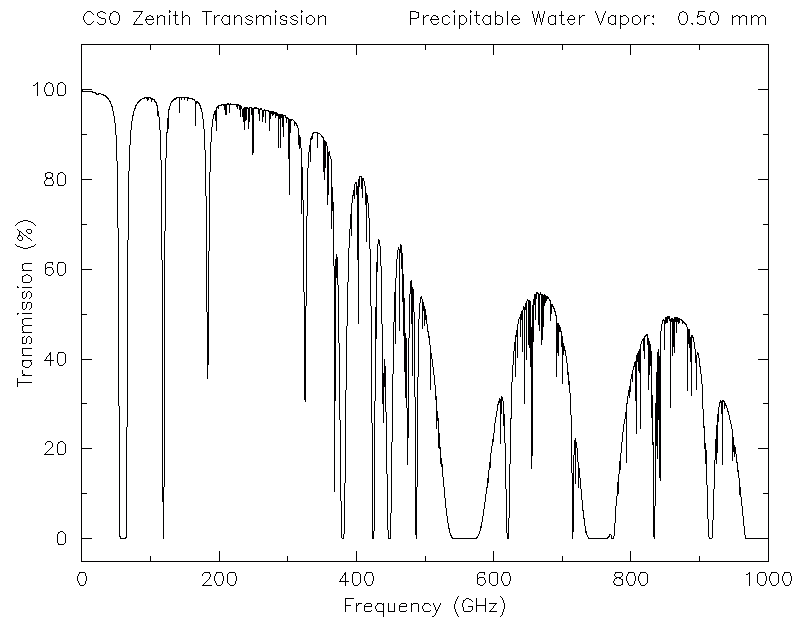A laser erected on a mountain peak aims its beam toward a spacecraft and heats up propellant carried by the spacecraft. The intense laser beam heats up the air and thus reduces its coefficient of refraction. This effect, called blooming, makes it difficult to focus the long, intense beam on the spacecraft. On a bad day clouds absorb more laser light than the propellant. The minimum mass of the laser and its power supply (for 1-ton cargo) is 106 tons.
Hydrogen propellant produces the highest specific impulse, but it does not absorb laser light well. A metal heat exchanger can raise hydrogen temperature to 2600 K. If the light enters the heat exchanger through a window, the hydrogen can reach 3700 K. Even higher temperatures can be achieved if the hydrogen is seeded with light-absorbing additive. Soot (carbon) can raise the temperature to 3800 K. Droplets of tungsten reach 5800 K, but they contaminate the spacecraft. Molecules of CO, CO2, CH4, and H2O absorb infrared light produced by carbon dioxide laser. A mixture of hydrogen and one of these chemicals can be heated by the carbon dioxide laser to 5000-6000 K. Unseeded hydrogen absorbs light via inverse bremsstrahlung absorption when it is heated to 15,000 K.
A solid block of black plastic absorbs the laser beam well, so it is often mentioned as a practicable propellant.
Ronald J. Glumb and Herman Krier, "Concepts and Status of Laser-Supported Rocket Propulsion," Journal of Spacecraft and Rockets, Vol. 21, No. 1, January-February 1984, pp. 70-79.
Mitat A. Birkan, "Laser Propulsion: Research Status and Needs," Journal of Propulsion and Power, Vol. 8, No. 2, March-April 1992, pp. 354-360.
Oleg A. Volkovitsky, Yuri S. Sedunov, and Leonid P. Semenov, Propagation of Intensive Laser Radiation in Clouds, AIAA, 1992, ISBN 1-56347-020-9.
Laser propulsion bibliography by Jordin Kare.
Laser propulsion page at Rensselaer Polytechnic Institute.
The laser beam heats up the hydrogen gas to a temperature of 1200 K. At this temperature the speed of sound in hydrogen is 2691 m/s. Exhaust gas velocity is about twice the speed of sound. Specific heat of hydrogen at constant pressure = cp = 14.05 kJ/kgK. Heating one kilogram of hydrogen from nearly 0 K to 1200 K consumes 17 MJ of laser beam energy. If the laser beam has the power of 1 MW and the rocket absorbs all its power, the rocket generates thrust of 300 Newtons. The total weight of the rocket is 15 kilograms and consists of 13 kilograms of hydrogen, 1 kilogram of structural parts, and 1 kilogram of cargo. There is enough hydrogen propellant to reduce rocket velocity before re-entry, so the rocket is reusable. It is too dangerous to aim the laser beam at the ground surface, so the rocket must be lifted to an altitude of a few kilometers before it is heated by the laser beam. Tethered balloons and kites are well suited for lifting the rocket. The 1 MW carbon dioxide laser costs about 100 million dollars. It can launch one hundred one-kilogram cargoes to low Earth orbit in one day, or about 30 tons of cargo in one year. A remote manipulator assembles orbital structures of arbitrary size from the small cargoes. No bibliography.
A microwave beam produced by a very large (>1km) phased array transmitter is aimed toward a spacecraft and heats up hydrogen propellant carried by the spacecraft. Unlike the laser beam, the long microwaves are not absorbed by the clouds. The hardware generating microwaves is two to three orders of magnitude cheaper than lasers of the same power. On the other hand, the microwaves cannot be focused as easily as the laser light, so the transmitter antenna must be very large. The receiver antenna on the spacecraft must be cooled by the liquid hydrogen propellant.
It may be possible to reduce the size of the transmitter antenna if the receiver antenna is a cloud of hydrogen plasma held in place by several superconductive electromagnets. Plasma is unstable, so designing such a device is difficult.
The environmental impact of the hydrogen propellant on the ozone layer may be severe.

J. Benford and J. Swegle, "High Power Microwaves," Artech House, Boston, MA, 1992.
Leik N. Myrabo and J. Benford, "Propulsion of Small Launch Vehicles using High Power Millimeter Waves," SPIE Paper 2154-23, Proceedings of OE/LASE '94 Conference, Los Angeles, CA, January 22-29, 1994.